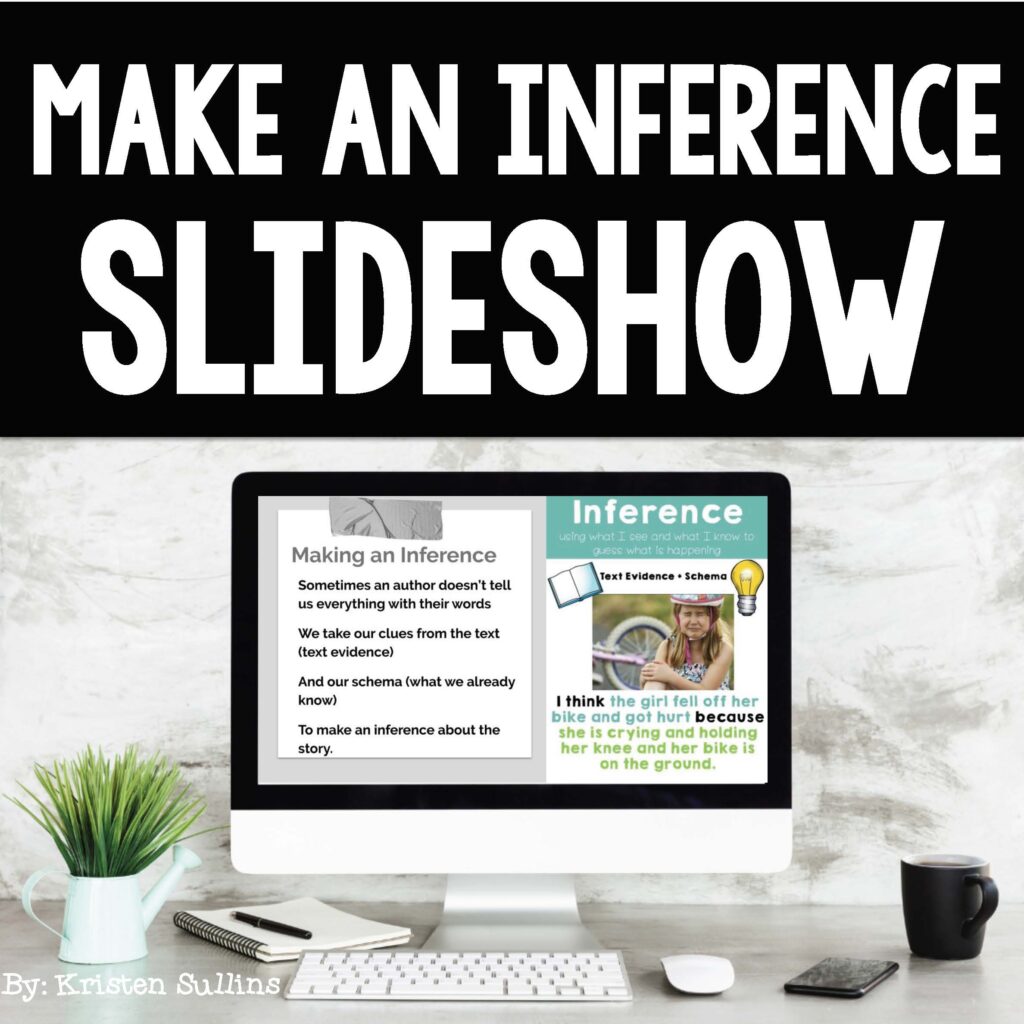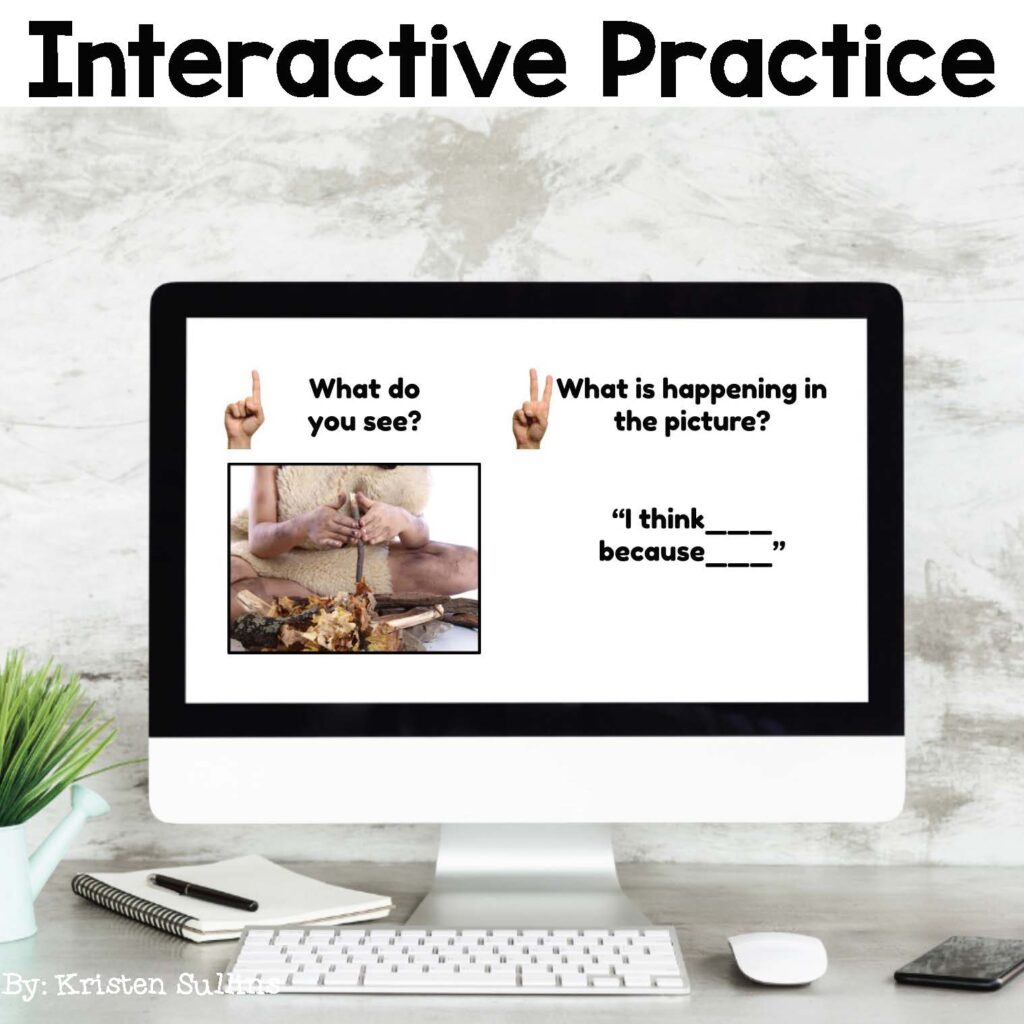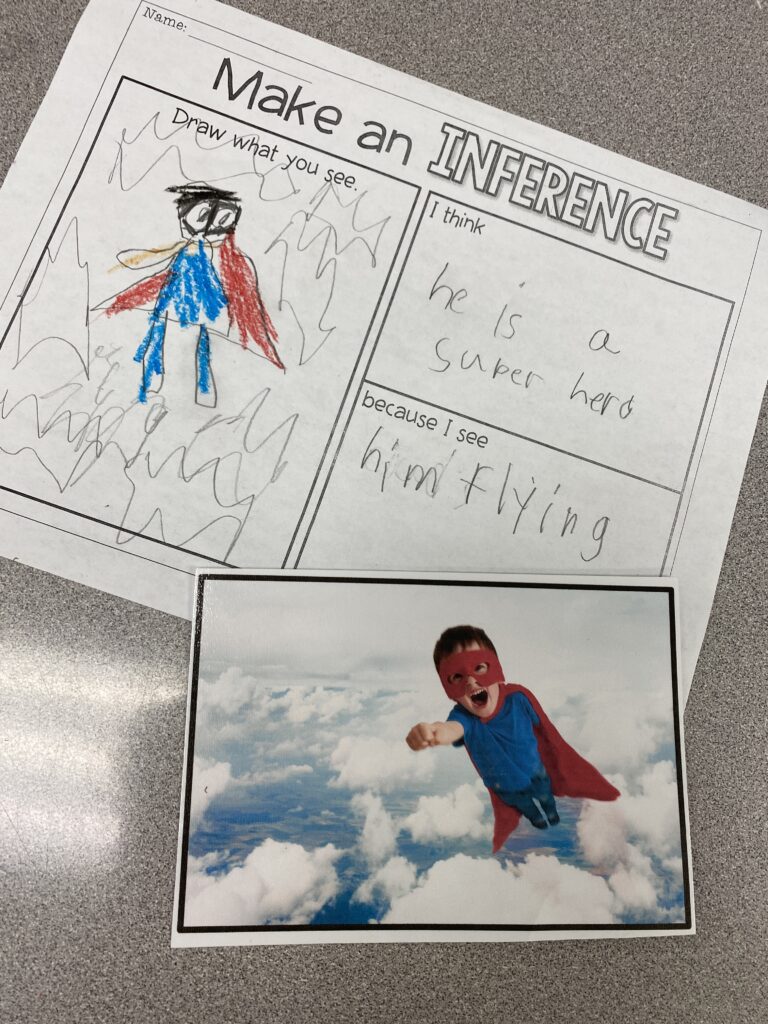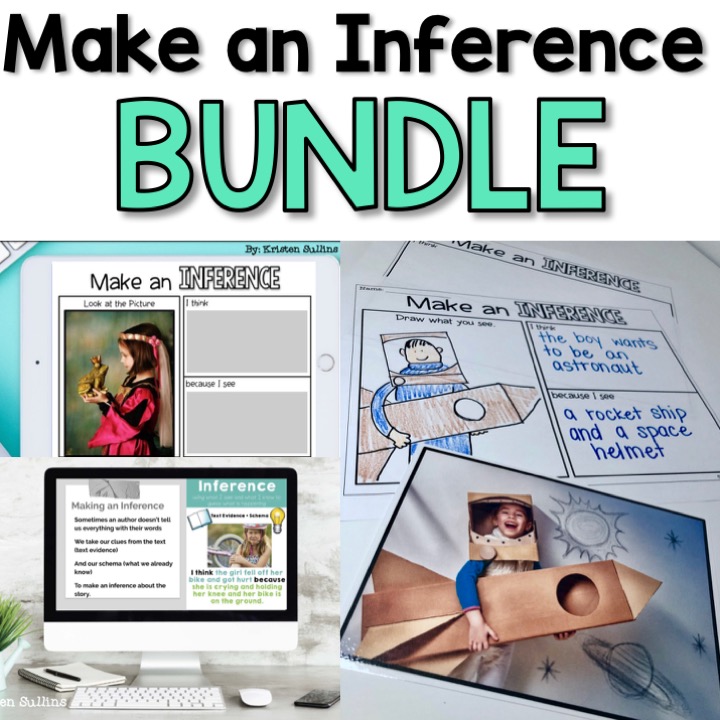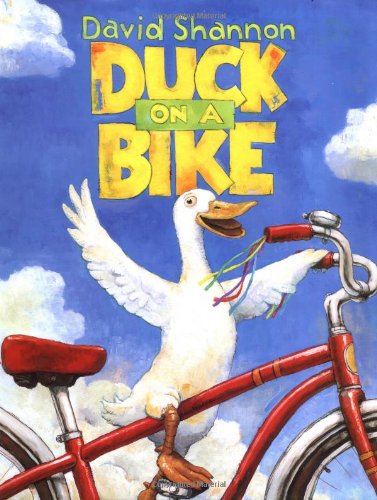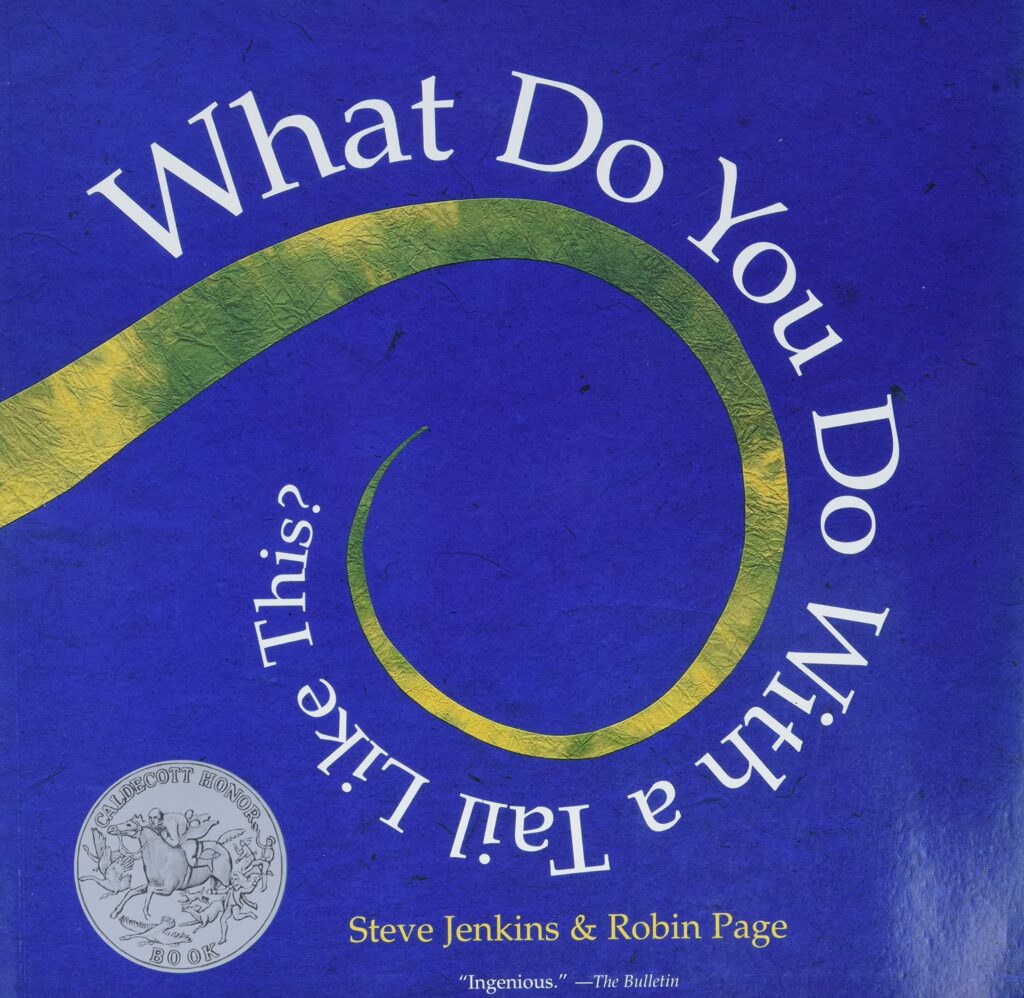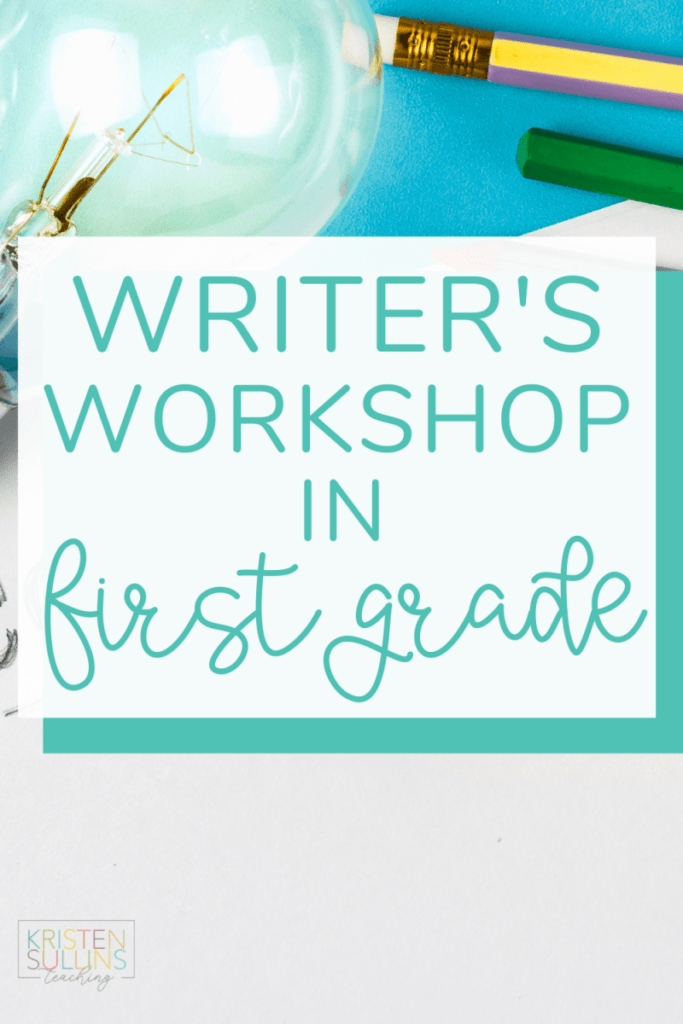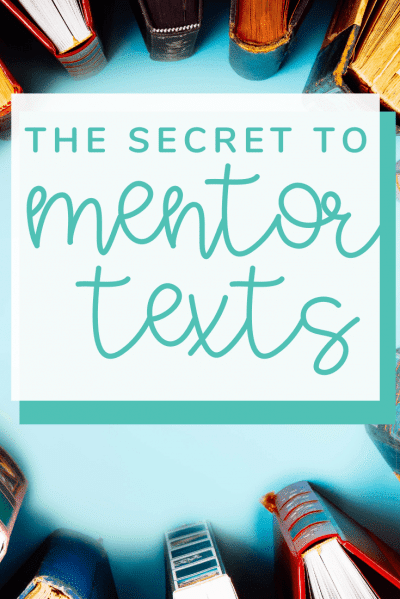Make an Inference (or Inferencing) is a foundational reading comprehension skill for first grade students. It's easily lumped in with predictions because it is in fact, a type of prediction.
To make an inference, students must use what they know (their background knowledge) and combine it with what they see/hear (text evidence) to make a guess (prediction) as to what is happening.
This sounds like an easy skill, but students have to be taught how to activate their background knowledge and link it with what they are currently seeing or hearing.
In fact, this is a skill that should be taught before you ever expect a first grade student to apply their inferencing skills to a text/read aloud.

What First Grade Students should know about how to Make an Inference
First grade students are expected to do a lot of things when it comes to being able to make an inference.
Wait, what IS in an inference?
An inference is a “logical guess made my connecting bits of information”. (TEKS Resource System)
An inference can be made about just about any story element including author’s purpose, message, plot, characters, topic, settings, events, etc.
First graders should be able to combine a variety of pieces from the text including the text, photos (or graphic features) with their own background knowledge to explain an inference they have made about a book.
Types of inferences that a first grade student should be able to make include:
- Drawing Conclusions (an inference based on more than one piece of information)
- Generalization (broad statement)
- Prediction (anticipate future events)
Things first grade teachers can do to help build the foundation for making an inference:
- Modeling the process of reading part of a text, then talking out loud of their particular background knowledge that helps them make an inference
- Talk about inferences during every class read-aloud or mentor text
- Asking students to explain their inferences to the class so they can hear different perspectives
How to Introduce Inferencing for First Grade
If you teach lower elementary, then you know that there is SO much that goes into the comprehension of a book. Students are learning so much at this age and even listening comprehension requires their little brains to work so hard.
Why do I bring this up?
Because I want you to think about how hard they are ALREADY working when they are listening to a read aloud and when you use a mentor text to introduce a NEW SKILL, most students’ brains go into overload!
So what should we do instead?
Start with a non-text activity. Let me introduce you to a new kind of “slideshow”.
I like to use interactive slideshows/powerpoints. My slideshows always follow this order:
- Teaching Slides: Introduces students to WHAT the skill is
- Guided Practice: Introduces students to HOW to apply the skill
- Interactive Practice: Gives students an example and allows them to PRACTICE the skill in an easy and concise way
Inferencing Activities for First Grade
After we practice the slideshow, then we practice building our inferencing muscles with some guided and independent practice.
I've found the best and easiest way to do this is with photographs of things that the students know a lot about.
My students do this Make an Inference station activity (seen on the left). We do one together as a class for guided practice.
Then, this activity goes into their stations for Guided Reading.
The best part about this activity is that you can leave it out for several weeks because each time students can choose a new picture!
The key to making this station activity work is to make sure the students are EXPLAINING their inference.
Students must write “I think___” but the most important part is “because I see”. It forces students to start identifying text (or picture) evidence which is crucial in the coming years.
Digital Inferencing Activities for First Grade
Whether you are teaching virtually (thanks alot COVID) or in the classroom, our students are primed now more than ever to complete activities digitally.
The Make an Inference station activity I just showed you is available digitally also!
You can read more about Digital Comprehension Tools here.
Mentor Texts for Make an Inference
A mentor text is an incredibly powerful tool for teaching reading comprehension skills!
(make sure you keep reading to the end of this post to see a list of my favorite mentor texts for make an inference)
The problem that many teachers run into with mentor texts is that there are SO MANY different skills you can teach with the same mentor text….
Sometimes we try to do TOO MUCH and we overwhelm our students!
Let me introduce you to a Comprehension Focus Question (CFQ).
A CFQ is one question that you focus on through the entire text!
It simplifies things for you and your students. (more on that later)…
But let's take a minute to dispel so myths about mentor texts..
A mentor text is NOT a book that you read once and put it away.
A mentor text is a book that you read once, then refer back to again and again and again.
The greatest benefit of a good mentor text is that after you have read it once, when you refer back to it, you aren’t reading the entire book again, you are simply referring back to one or two pages.
It will save you SO much time.
AND students are already familiar with the story line meaning that already have a foundation for whatever comprehension skill you are about to dive into!
How to Boost Comprehension for Problem & Solution
Comprehension Focus Questions
As I mentioned, a Comprehension Focus Question (CFQ) is a very focused and intentional comprehension goal for an activity, a week or even a unit.
If you have done your research and you understand your learning standard, the vocabulary and what students need to know…
Then it becomes very easy to choose a goal (or a comprehension focus question).
But, why do you need a comprehension goal?
To stay FOCUSED!
Not just for you, but for your students also!
Let’s look at an example. Let’s say that this week you are focusing on how to make an inference. Well, there are about a hundred different ways you can make an inference and a CFQ allows you to focus on one area at a time.
Example CFQ: “How Did The Character Change From ___ To ____?”
In this comprehension focus question, you and your students are focusing in on the characters of the story.
The great thing about CFQ’s is that the next time you pull out this mentor text, you can choose a different CFQ to focus on while still practicing how to make an inference!


Sentence Stems
Another great strategy that falls right in long with mentor texts and comprehension focus questions is sentence stems.
A sentence stem is a phrase that your first grade students will use to answer a comprehension question.
Sentence stems are designed to get students to answer comprehension questions more fully rather than giving one word answers.
Sentence stems encourage students to explain their thinking.
I like to have a list of sentence stems next to my table that are specific to each comprehension skill. I stick to one or two stems per skill for the entire year because I want my students to be consistent. (This also makes it a lot easier for them)
If we are sticking with our Make an Inference example, I would use the following sentence stems:
I Think ___ Because____.
I Read This ____ So I Think _____
Inferencing Activities for First Grade
All of the activities that you found in this post, both printable and digital, can be found in my Make an Inference Bundle here.
You can save up to 20% by purchasing the items together, but you can also purchase individual items to better fit your needs!
Best Books for Inferencing
**You can use the recording sheet from the Make an Inference station with all of these read alouds!

